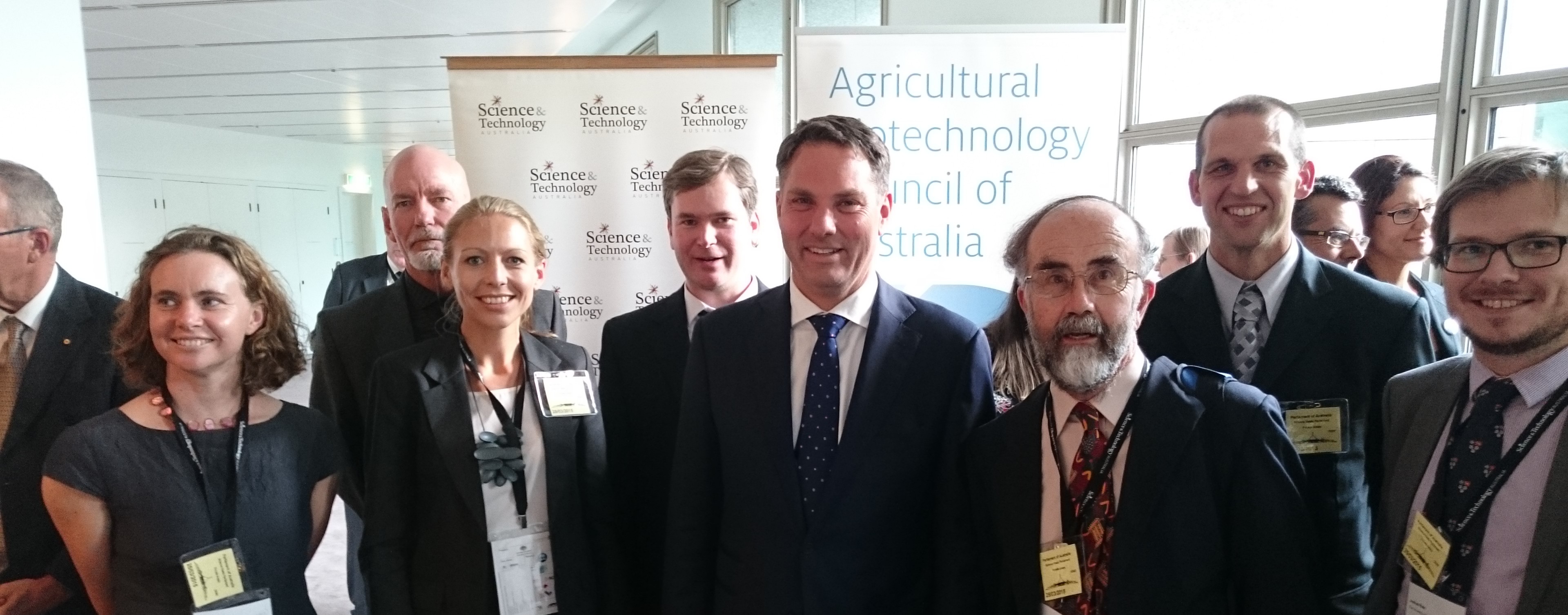Every year for the last 15 years, a swarm of working scientists has descended on Canberra in order to meet with parliamentarians, learn how policy development works, and network with each other.
This year, AMSI sent Simi Henderson and me, joining Aidan Sims (Wollongong), Kevin Larkin (Griffith), Jacob Humphries, John Henstridge and Joshua Ross (Adelaide) in representing the mathematics community.
The Science meets Parliament program involves a day of workshops, with talks by lobbyists, public servants and journalists, followed by a day at parliament house, where the scientists meet with the parliamentarians.
Science seems in a precarious place at the moment. Our research infrastructure has been threatened with the loss of funding (through NCRIS), and the Future Fellowship program has been shelved. Reform of funding for higher education is still unresolved. On the positive side, we again have a Minister for Industry and Science, Ian Macfarlane, with Karen Andrews serving as the parliamentary secretary for science.
Minister Macfarlane challenged the participants to create better links with industry, noting that we came last in an OECD survey on the rate of collaboration between business and research organisations. Labor Senator Kim Carr gave a wide ranging and frank speech, particularly about higher education. He made the point that consultation should go beyond the small group of vice-chancellors, and include the whole university community.
Other notable speakers were the opposition leader Bill Shorten, Liberal MP Dennis Jensen (a former CSIRO scientist) and Greens MP Adam Bandt, who made a witty speech that included a calculus joke.
As mathematicians, we were advocating improving maths education. Around 40% of year 7 to 10 maths classes do not have a qualified maths teacher. Meanwhile, maths enrolments in year 12 have decreased by 34% over the last 20 years— and both these trends are reinforcing each other. The politicians we spoke to were very receptive to this message, and we are hopeful of change.
We were particularly heartened by the Chief Scientist Ian Chubb’s report ’The Importance of Advanced Physical and Mathematical Sciences to the Australian Economy’. He highlighted the importance of basic research, and estimates that the physical and mathematical sciences bring about $145 billion to the Australian economy directly (and more indirectly).
Other scientists came to advocate policy responses related to their research: the climate scientists were particularly articulate about the challenges of communicating when your results themselves are seen as political.
Julie Clutterbuck
ARC Future Fellow: Curvature flows and spectral estimates
Senior Lecturer, School of Mathematical Sciences, Monash University




